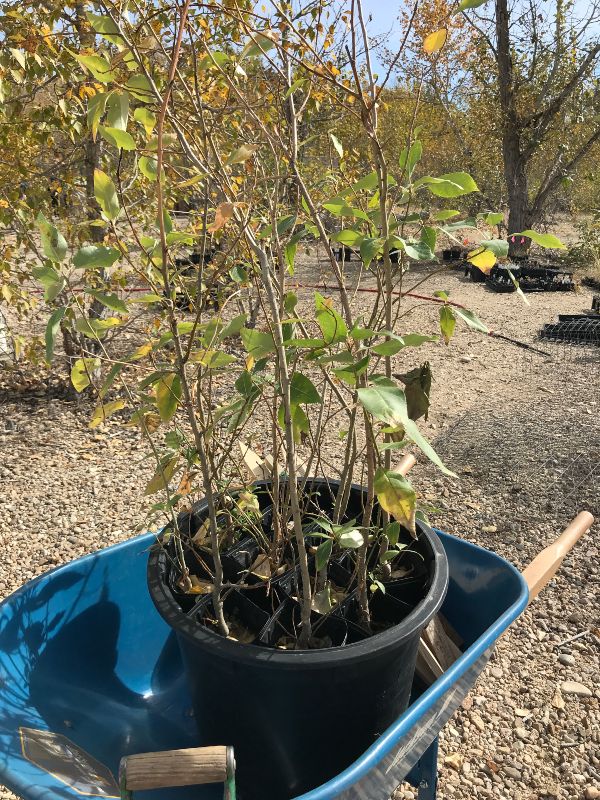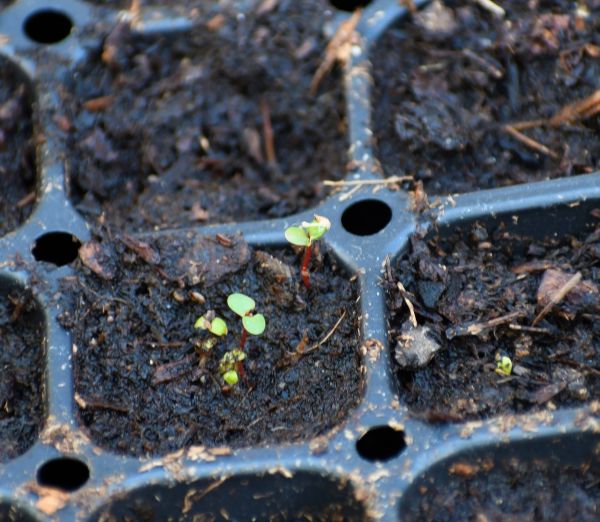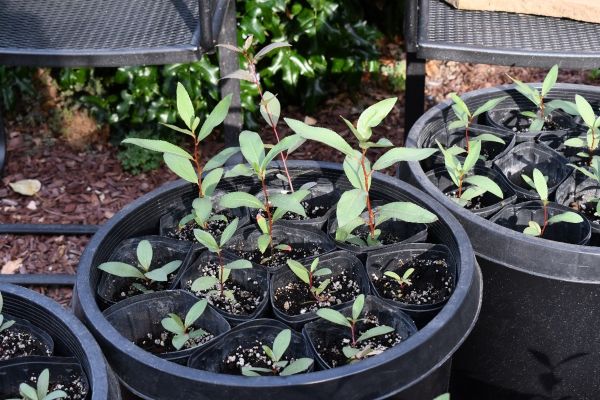by Kim Chmura
“From little seeds grow mighty trees.” Aeschylus
For the past 3 years, the Boise River Enhancement Network (BREN) has led a team of volunteers to grow black cottonwood trees from seeds. The following year, BREN provides these saplings to various Boise River restoration projects, insuring the trees planted are well-suited for the local environment. Each year the Black Cottonwood Project has grown (pun intended), with increasing numbers of both volunteers and trees planted. In 2021, BREN partnered with 6 organizations and 37 volunteers to collect and plant ~4,500 seeds, producing over 130 viable trees.
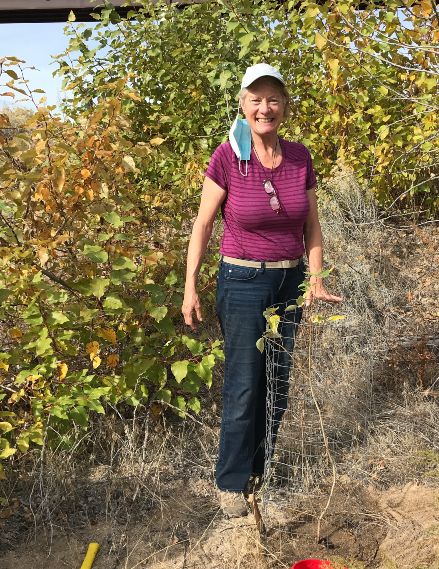
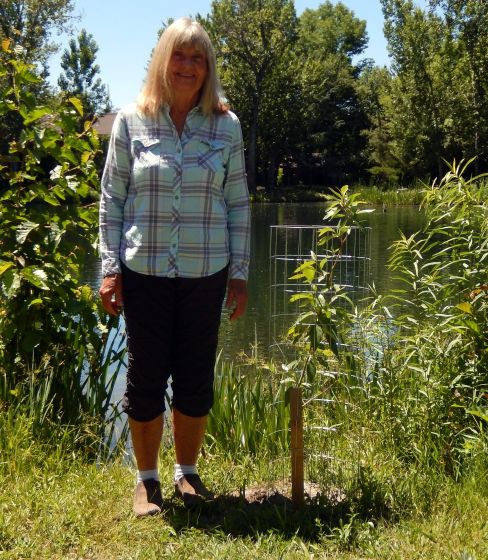 Trees planted in 2020.
Trees planted in 2020.
Our partners for this project include City of Boise Parks and Recreation, Land Trust of the Treasure Valley, Intermountain Bird Observatory, Golden Eagle Audubon Society, Native Plant Network, Boise Trout Unlimited, and the Harris Ranch Wildlife Mitigation Association. In addition, many of this year’s volunteers were from the Sagebrush Steppe and City of Trees chapters of the Idaho Master Naturalists. Edwards Greenhouse was a helpful commercial partner for this project, offering their expertise, protected space, and an automatic watering system through the sensitive seed germination stage.
Learning As We Go
One of the goals of this project is to learn more about planting and caring for cottonwood seedlings so yields can continue to increase. Some of our key findings this year were:
- We need to better define the soil qualities required to optimize germination and growth.
- Likewise, sunlight and watering systems could be better optimized.
- A poor seed shower will greatly impact our yields.
- Commercial nurseries bring expertise and large-scale, automated operations, but may still need our guidance and close coordination in growing black cottonwoods.
- Two effective seed-cleaning processes were developed: the roll & twist method and the compressed air cyclone method.
- There are pockets of hybrids and Plains cottonwoods dotted around the city, and we need to develop better ways for our volunteers to distinguish black cottonwoods from other species common to the American West.
How Hard Can It Be?
Each female black cottonwood tree produces millions of seeds per year, but only a few find the proper seedbed to produce seedlings that survive. We hoped to dramatically improve on nature’s yields. Admittedly, there are not that many variables when planting black cottonwoods: seed quality and preparation, soil and water quality, and light. How hard can it be? Interestingly, in 2021 all those variables proved to be challenging.
For reasons unknown, the 2021 cottonwood seed shower was both late and produced less than half its normal amount of seeds. Volunteers collecting and planting seeds were more likely to collect older seeds from the ground simply because new cotton was not falling every day. Since these seeds are only viable for a short time, chances are good that we cleaned, sorted, and planted some seeds that were too old to germinate.
The soil purchased for the 2021 project was marketed as “tree soil,” but was very dense and contained a high salt level that impeded germination. (In previous years, we used bagged potting soil, but this option is much too expensive to use in the quantities needed for this and other native plant projects.) A soil team will soon be organized to identify options to purchase and/or make our own soil mix.
Conditions in commercial greenhouses are generally more humid/tropical than those Idaho’s native plants typically experience and prefer. Filtered/shaded light in the covered germination room led to spindly plants with tiny leaves, easily knocked down into the wet soil by automatic misting sprinklers. The plants quickly gained width, strength, and leaf size once they were transferred outdoors into direct sunlight.
Separating the Seeds from the Cottony Fluff
One of the most valuable lessons learned resulted in our development of two effective seed cleaning methods, both of which dramatically cut down on the amount of time it took to separate the seeds from the cottony fluff. The roll and twist method (see photos) requires no equipment and works well when planting one tray at a time. If larger seed quantities are needed, a 30-second blast of compressed air used to spin the cotton around in a bottle will gently separate the seeds from the fluff. This method can produce more than a thousand seeds in minutes and greatly reduces the eye strain that comes with cleaning seeds with tweezers. In future experiments, we will compare seeds planted with and without fluff to better understand the difference in germination rates.
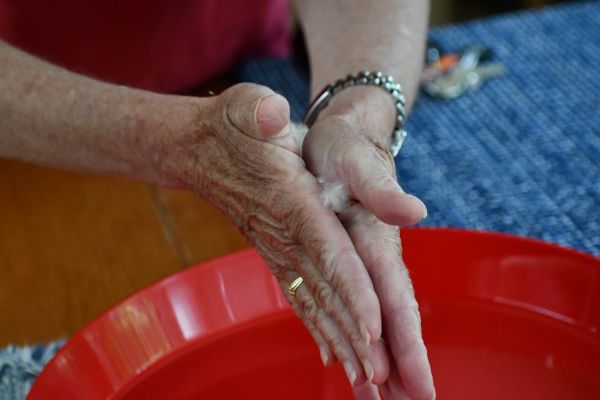
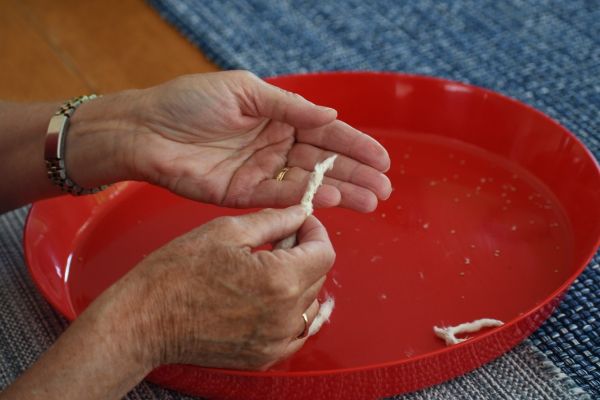
By examining outliers in seed size and the seed shower timing, we discovered small pockets and groves of cottonwood trees that differ from the native species common to the Treasure Valley. Seedlings grown from these hybrids and Plains cottonwood were very healthy – tall and leafy, with strong stems. Unfortunately, they were not the proper species for restoration projects along the Boise River because of the risk of incompatibility with the local ecosystem. It may be that more black cottonwood lookalikes exist, and we need to remember always to distinguish lookalikes from the native species and to grow only the most compatible trees for our river corridor.
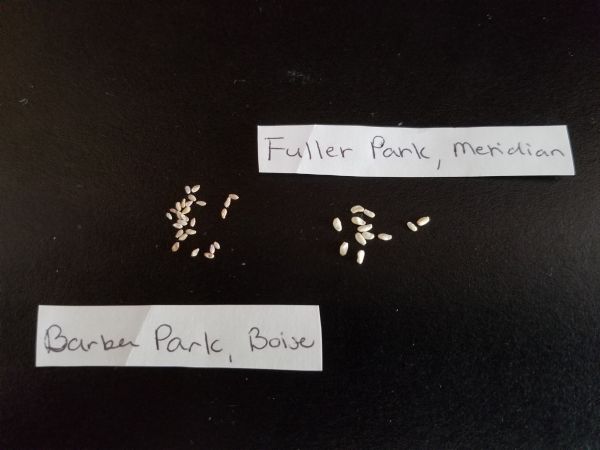 Left is Black cottonwood. Right is Plains.
Left is Black cottonwood. Right is Plains.
More Restoration Work Means More Demand for Native Cottonwoods
Demand for our black cottonwood seedlings is increasing as more Boise River restoration efforts get underway, so we will continue to refine and optimize our growing process next year. We cannot control the quantity or quality of the seed shower, but we believe optimizing the soil quality, watering system and light conditions can significantly improve our yields.
We invite you to join us for our next adventure next spring to “build the ark” that will sustain the black cottonwood forest far into the future. Please email us at info@boiseriverenhancement.org with your interest and ideas.
“He who plants a tree, plants a hope.” Lucy Larcom
